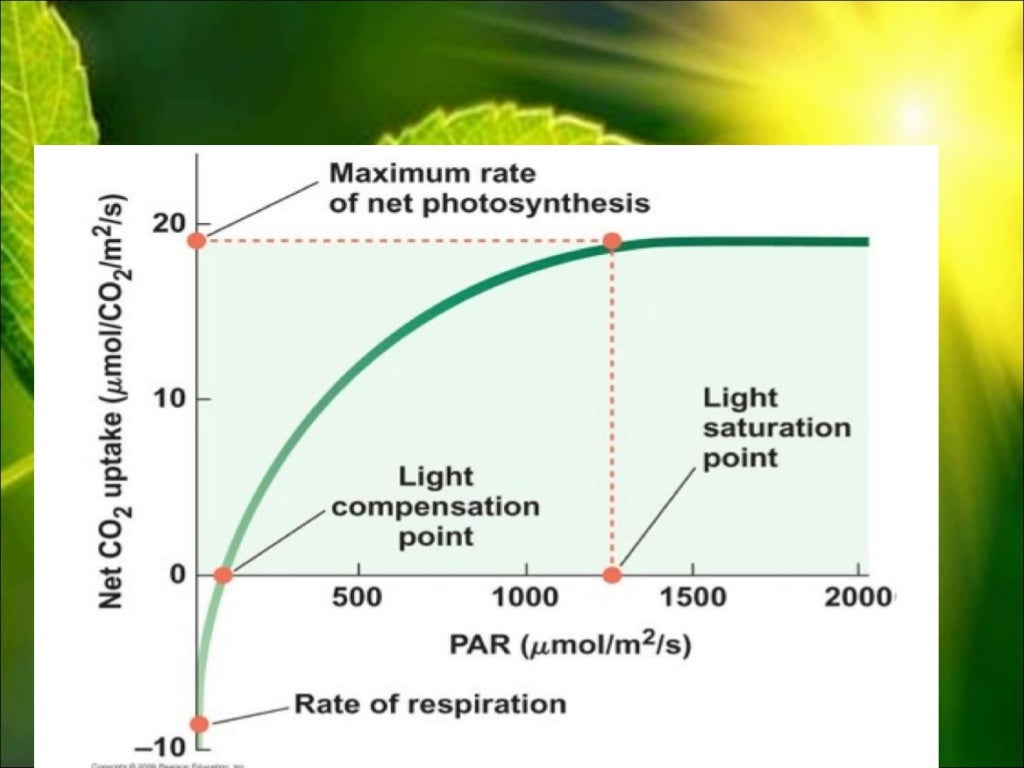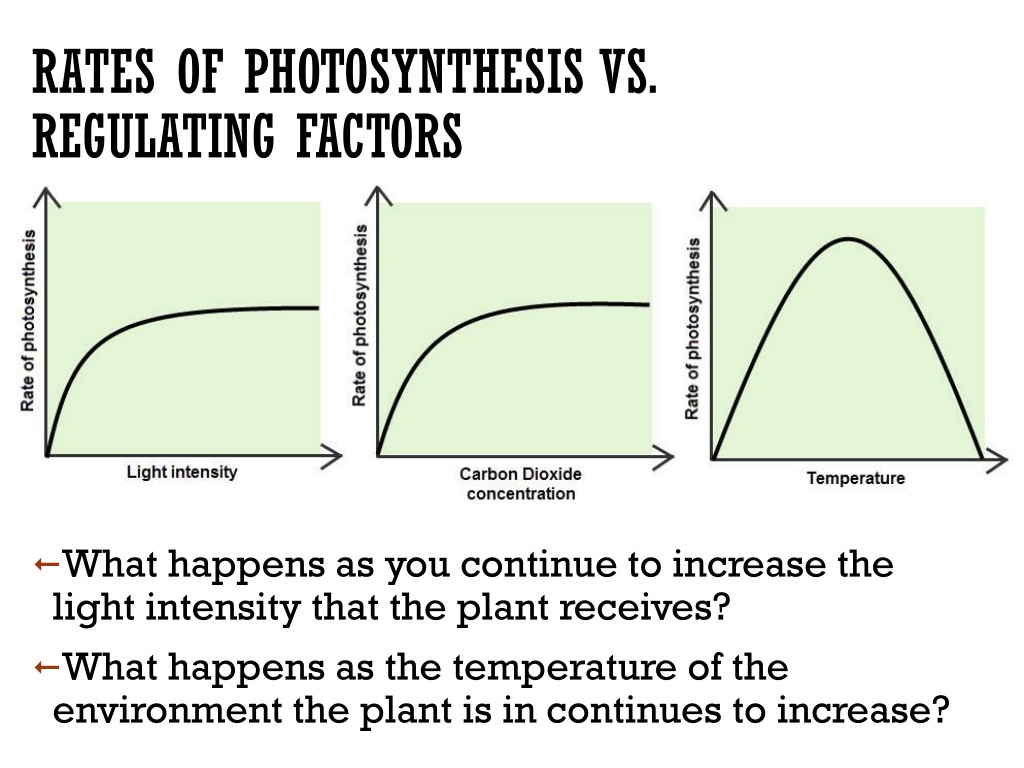Does the amount stroma affect the rate of photosynethsis – Does the amount of stroma affect the rate of photosynthesis? This question delves into the intricate world of plant cells, specifically the chloroplasts, where the process of photosynthesis takes place. Stroma, the fluid-filled space within chloroplasts, plays a crucial role in the light-independent reactions of photosynthesis, where carbon dioxide is converted into sugars. The amount of stroma, its composition, and its structural features all contribute to the efficiency of this vital process.
This exploration will investigate the relationship between stroma volume and the rate of photosynthesis, considering how factors like enzyme activity, substrate availability, and the Calvin cycle are influenced. We’ll examine how variations in stroma structure across different plant species might lead to adaptations for diverse environments. Ultimately, we’ll uncover how stroma, the unseen powerhouse within plant cells, dictates the very essence of plant growth and productivity.
Stroma
The stroma is a dense fluid-filled region located within the chloroplasts of plant cells. It plays a crucial role in photosynthesis, particularly in the light-independent reactions, also known as the Calvin cycle. The stroma provides a suitable environment for these reactions to occur efficiently.
Stroma’s Structural Features and Composition
The stroma is a complex mixture of enzymes, proteins, and other molecules, all working together to facilitate the biochemical processes of photosynthesis. It is enclosed by a double membrane, the chloroplast envelope, which separates it from the cytoplasm. The stroma contains a network of interconnected thylakoid membranes, which are flattened, sac-like structures. These thylakoids are arranged in stacks called grana, and they are the sites of light-dependent reactions.
The stroma surrounds the grana and provides a suitable environment for the Calvin cycle.
Stroma’s Role in the Light-Independent Reactions
The stroma plays a vital role in the light-independent reactions of photosynthesis, which occur in the stroma itself. This process uses the energy stored in ATP and NADPH, produced during the light-dependent reactions, to convert carbon dioxide into glucose. The stroma provides a suitable environment for these reactions by:
- Maintaining a high concentration of carbon dioxide, the primary substrate for the Calvin cycle.
- Providing a suitable pH and ionic environment for the enzymes involved in the Calvin cycle to function optimally.
- Containing the necessary enzymes and cofactors for the Calvin cycle, including Rubisco, which catalyzes the first step in carbon fixation.
Enzymes and Molecules in the Stroma
The stroma contains a diverse array of enzymes and molecules that are essential for the light-independent reactions. Some of the key enzymes and molecules include:
- Rubisco (Ribulose-1,5-bisphosphate carboxylase/oxygenase): This enzyme catalyzes the first step of the Calvin cycle, the fixation of carbon dioxide into an organic molecule.
- Phosphoribulokinase: This enzyme converts ribulose-5-phosphate into ribulose-1,5-bisphosphate, the substrate for Rubisco.
- Glyceraldehyde-3-phosphate dehydrogenase: This enzyme catalyzes the reduction of 1,3-bisphosphoglycerate to glyceraldehyde-3-phosphate, a key intermediate in the Calvin cycle.
- Starch synthase: This enzyme synthesizes starch, a storage form of glucose, from glucose-1-phosphate.
Photosynthesis

Photosynthesis is a complex process that allows plants and other photosynthetic organisms to convert light energy into chemical energy stored in the form of glucose. This process is essential for life on Earth, as it provides the primary source of energy for most ecosystems. Photosynthesis occurs in two stages: the light-dependent reactions and the light-independent reactions.
The Two Stages of Photosynthesis
Photosynthesis is divided into two distinct stages, each with its specific functions and requirements.
- Light-dependent reactions: These reactions occur in the thylakoid membranes of chloroplasts and require light energy. During this stage, light energy is absorbed by chlorophyll and other pigments, which excites electrons and initiates a chain of electron transport reactions. This process ultimately leads to the production of ATP (adenosine triphosphate) and NADPH (nicotinamide adenine dinucleotide phosphate), which are energy carriers that will be used in the next stage of photosynthesis.
Oxygen is also produced as a byproduct of this stage.
- Light-independent reactions: Also known as the Calvin cycle, these reactions occur in the stroma of chloroplasts and do not directly require light energy. Instead, they utilize the energy carriers ATP and NADPH produced in the light-dependent reactions to convert carbon dioxide from the atmosphere into glucose. This process is crucial for the synthesis of organic molecules essential for plant growth and development.
The Role of Stroma in Light-Independent Reactions
The stroma is the fluid-filled region surrounding the thylakoid membranes in chloroplasts. It plays a vital role in the light-independent reactions, providing the environment for the Calvin cycle to occur. The stroma contains enzymes and other molecules necessary for carbon fixation and sugar synthesis.
The Calvin Cycle
The Calvin cycle is a series of biochemical reactions that occur in the stroma of chloroplasts and are responsible for carbon fixation and the synthesis of glucose. The cycle can be divided into three main stages:
- Carbon fixation: In this stage, carbon dioxide from the atmosphere is incorporated into an organic molecule, ribulose-1,5-bisphosphate (RuBP), catalyzed by the enzyme Rubisco. This reaction produces an unstable six-carbon compound that quickly splits into two molecules of 3-phosphoglycerate (3-PGA).
- Reduction: In this stage, the 3-PGA molecules are reduced to glyceraldehyde-3-phosphate (G3P) using ATP and NADPH generated in the light-dependent reactions. This step involves the addition of electrons and energy to the 3-PGA molecules, converting them into a more reduced form.
- Regeneration of RuBP: In this final stage, some of the G3P molecules are used to synthesize glucose, while others are recycled to regenerate RuBP, which can then participate in another round of carbon fixation. This step ensures that the Calvin cycle can continue to operate efficiently.
The Calvin cycle is a cyclical process that continuously fixes carbon dioxide and produces glucose, utilizing the energy carriers ATP and NADPH generated in the light-dependent reactions.
Factors Affecting Photosynthesis Rate

Photosynthesis, the process by which plants convert light energy into chemical energy, is influenced by a variety of factors. Understanding these factors is crucial for comprehending the efficiency of photosynthesis and its role in plant growth and productivity.
Light Intensity
Light intensity, a measure of the amount of light energy that falls on a surface, plays a critical role in photosynthesis. As light intensity increases, the rate of photosynthesis generally rises. This is because light provides the energy needed to drive the light-dependent reactions of photosynthesis.
- At low light intensities, the rate of photosynthesis is limited by the availability of light energy.
- As light intensity increases, the rate of photosynthesis rises proportionally until it reaches a saturation point. At this point, all the photosynthetic machinery is working at its maximum capacity, and further increases in light intensity do not lead to a significant increase in the rate of photosynthesis.
- However, at extremely high light intensities, the rate of photosynthesis can decline. This is because excessive light can damage the photosynthetic machinery, leading to photoinhibition.
Carbon Dioxide Concentration
Carbon dioxide is a key reactant in photosynthesis, serving as the source of carbon for the production of sugars. The concentration of carbon dioxide in the atmosphere directly affects the rate of photosynthesis.
- At low carbon dioxide concentrations, the rate of photosynthesis is limited by the availability of carbon dioxide.
- As carbon dioxide concentration increases, the rate of photosynthesis increases until it reaches a saturation point. At this point, the enzyme responsible for fixing carbon dioxide, RuBisCO, is working at its maximum capacity, and further increases in carbon dioxide concentration do not lead to a significant increase in the rate of photosynthesis.
Temperature, Does the amount stroma affect the rate of photosynethsis
Temperature affects the rate of photosynthesis by influencing the activity of enzymes involved in the process. Each enzyme has an optimal temperature at which it functions most efficiently.
- At low temperatures, enzyme activity is reduced, slowing down the rate of photosynthesis.
- As temperature increases, enzyme activity increases, leading to a higher rate of photosynthesis. However, beyond the optimal temperature, enzyme activity begins to decline due to denaturation.
- At extremely high temperatures, enzymes become denatured and lose their functionality, leading to a significant decrease in the rate of photosynthesis.
Stroma Volume and Photosynthesis Rate
The stroma, the fluid-filled region within chloroplasts, is the site of the Calvin cycle, the light-independent reactions of photosynthesis. The volume of the stroma plays a significant role in influencing the rate of photosynthesis.
- A larger stroma volume provides a greater surface area for enzyme activity, increasing the potential for carbon dioxide fixation. This is because enzymes involved in the Calvin cycle are located within the stroma.
- A larger stroma volume also provides a greater space for the accumulation of substrates and products of the Calvin cycle, facilitating the smooth operation of the process. This allows for the efficient utilization of the products of the light-dependent reactions, which are used as inputs in the Calvin cycle.
Experimental Evidence
Numerous studies have investigated the relationship between stroma size or density and photosynthetic efficiency.
- For instance, a study published in the journal “Plant Physiology” found that increasing the stroma volume in chloroplasts of tobacco plants resulted in a significant increase in the rate of photosynthesis. The researchers attributed this increase to the greater availability of enzymes and substrates within the larger stroma. This study provides strong evidence that stroma volume directly influences photosynthetic efficiency.
- Another study, published in “Nature,” focused on the role of stroma density in photosynthetic efficiency. The researchers found that chloroplasts with a higher stroma density exhibited a higher rate of photosynthesis. This was attributed to the increased concentration of enzymes and substrates within the denser stroma, leading to a more efficient utilization of resources.
Stroma Variability and Photosynthetic Adaptation: Does The Amount Stroma Affect The Rate Of Photosynethsis

The stroma, the fluid-filled region within chloroplasts, plays a pivotal role in photosynthesis. Its structure and composition can vary significantly across different plant species, reflecting adaptations to diverse environmental conditions. These variations directly impact the efficiency and rate of photosynthesis.
Stroma Variability in Plants Adapted to Different Light Environments
The stroma’s structure and composition are influenced by the light environment in which a plant grows. Plants adapted to high light conditions often exhibit distinct stroma characteristics compared to those adapted to low light conditions.
- High Light Environments: Plants growing in high light environments, such as deserts or open fields, face the challenge of excessive light energy. To mitigate photodamage, they often develop a denser stroma with a higher concentration of photosynthetic pigments, particularly chlorophyll. This increased pigment density allows for more efficient light capture and reduces the risk of photoinhibition. Additionally, the stroma of these plants may contain higher levels of antioxidants, such as carotenoids, which protect against oxidative stress caused by excess light.
- Low Light Environments: Plants growing in low light environments, such as forest understories or shaded areas, face the challenge of limited light availability. To maximize light capture, they often have a more loosely packed stroma with a lower concentration of photosynthetic pigments. This allows for greater light penetration and absorption, even under low light conditions. The stroma of these plants may also contain more efficient light-harvesting complexes, which can capture and transfer light energy with higher efficiency.
Stroma Modifications and Photosynthetic Rate
Changes in stroma structure and composition can significantly impact photosynthetic rates and efficiency.
- Increased Stroma Density: A denser stroma, often observed in high light-adapted plants, can enhance photosynthetic efficiency by increasing the concentration of photosynthetic enzymes and pigments. This allows for faster and more efficient carbon fixation.
- Higher Pigment Concentration: A higher concentration of photosynthetic pigments in the stroma, as seen in high light-adapted plants, can improve light capture and utilization, leading to increased photosynthetic rates.
- Increased Antioxidant Levels: Higher levels of antioxidants in the stroma, particularly in high light-adapted plants, protect against photodamage and oxidative stress, ensuring the stability of photosynthetic machinery and maintaining optimal photosynthetic efficiency.
- Efficient Light-Harvesting Complexes: Plants adapted to low light conditions often possess more efficient light-harvesting complexes in their stroma, which can capture and transfer light energy with greater efficiency, maximizing photosynthesis under limited light availability.
Stroma Variability and Environmental Adaptation
The variations in stroma structure and composition across different plant species reflect their adaptation to diverse environments. These adaptations allow plants to optimize photosynthesis and thrive in specific light conditions.
The stroma’s dynamic nature allows plants to adjust their photosynthetic capacity in response to changes in environmental conditions, ensuring their survival and optimal growth.
Stroma and Plant Growth
The stroma, a critical component of chloroplasts, plays a pivotal role in plant growth by influencing the production of essential compounds. Its volume and structure are directly linked to the efficiency of photosynthesis, impacting the overall growth and yield of plants.
Stroma Volume and Plant Growth
The stroma’s volume is directly proportional to the photosynthetic capacity of chloroplasts. A larger stroma allows for increased storage of photosynthetic products, such as sugars, which serve as building blocks for plant growth. These sugars are utilized for various processes, including cell division, expansion, and the synthesis of structural components like cellulose.
- Increased Stroma Volume: A larger stroma can accommodate more enzymes and other proteins involved in the Calvin cycle, enhancing the rate of carbon fixation. This leads to greater sugar production, ultimately contributing to faster growth rates and increased biomass accumulation.
- Reduced Stroma Volume: Conversely, a smaller stroma can limit the capacity for sugar production, potentially hindering plant growth and development. This can be observed in plants under stress conditions, such as drought or nutrient deficiency, where chloroplasts may exhibit reduced stroma volume.
Stroma Structure and Plant Development
The structural organization of the stroma also influences plant growth and development. The stroma contains a network of thylakoid membranes, where light-dependent reactions of photosynthesis take place. The arrangement and distribution of these membranes within the stroma impact the efficiency of energy capture and transfer, influencing the overall photosynthetic rate.
- Thylakoid Stacking: The stacking of thylakoid membranes into grana increases the surface area available for light absorption and electron transport. This enhances the efficiency of light-dependent reactions, leading to increased sugar production and faster plant growth.
- Stroma Composition: The stroma contains various enzymes, proteins, and other molecules that are crucial for photosynthesis and plant growth. Changes in the composition of these components can influence the metabolic activity of chloroplasts, affecting plant development and yield.
Manipulating Stroma Characteristics for Enhanced Plant Productivity
Understanding the link between stroma characteristics and plant growth opens avenues for manipulating these features to enhance plant productivity.
- Genetic Engineering: Modifying genes involved in stroma development and composition can potentially lead to increased stroma volume, improved thylakoid stacking, or altered enzyme activity, ultimately enhancing photosynthetic efficiency and plant growth.
- Nutrient Management: Supplying plants with optimal levels of nutrients, such as nitrogen and phosphorus, can promote the development of larger and more efficient chloroplasts with increased stroma volume.
- Light Intensity: Adjusting light intensity can influence the structure and composition of the stroma. Plants grown under high light conditions often develop more stacked thylakoid membranes, increasing their photosynthetic capacity.
“Manipulating stroma characteristics holds promise for enhancing plant productivity and addressing the global food security challenge.”
The intricate interplay between stroma and photosynthesis reveals a fascinating world within plant cells. Understanding how stroma volume, composition, and structure influence the rate of photosynthesis is crucial for comprehending plant growth, adaptation, and productivity. From the intricacies of the Calvin cycle to the variations in stroma across different species, we’ve explored the profound impact of this essential component of chloroplasts.
As we delve deeper into the secrets of stroma, we unlock a greater understanding of the delicate balance that sustains life on Earth.
FAQs
What are the key enzymes found in the stroma?
The stroma contains a variety of enzymes essential for the light-independent reactions of photosynthesis, including Rubisco (ribulose-1,5-bisphosphate carboxylase/oxygenase), which catalyzes the first step of carbon fixation, and other enzymes involved in the Calvin cycle.
How does the stroma’s composition vary across different plant species?
Stroma composition can vary depending on the plant species and its adaptation to specific environments. For example, plants adapted to high light conditions may have higher concentrations of certain enzymes and pigments within their stroma.
Can manipulating stroma characteristics enhance plant productivity?
Yes, manipulating stroma characteristics, such as its volume or composition, could potentially enhance plant productivity. Researchers are exploring ways to optimize stroma properties to increase the efficiency of photosynthesis and boost crop yields.






